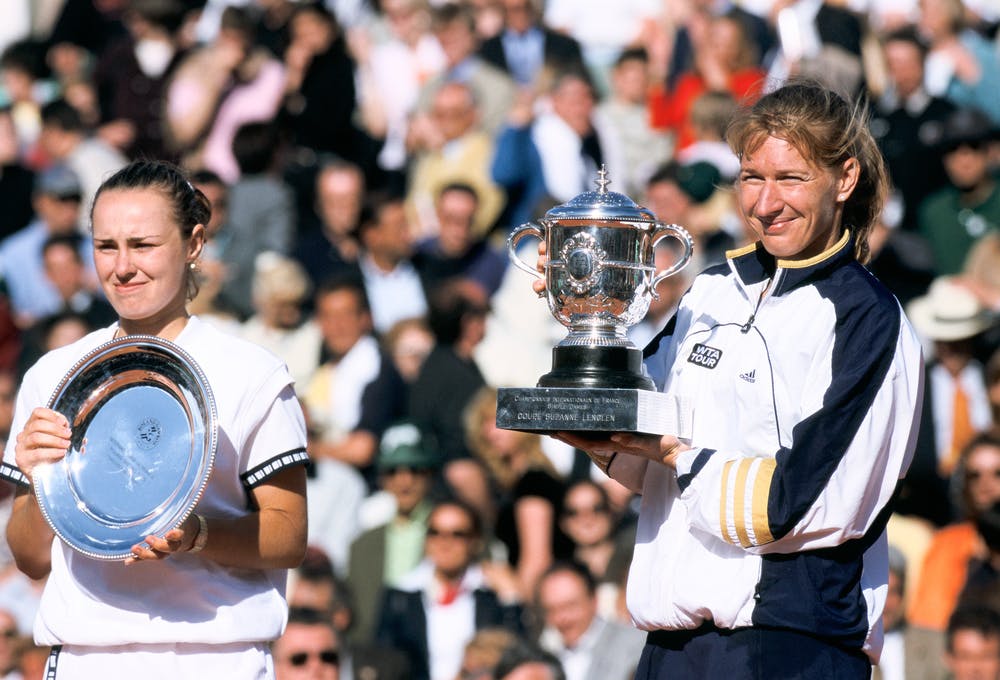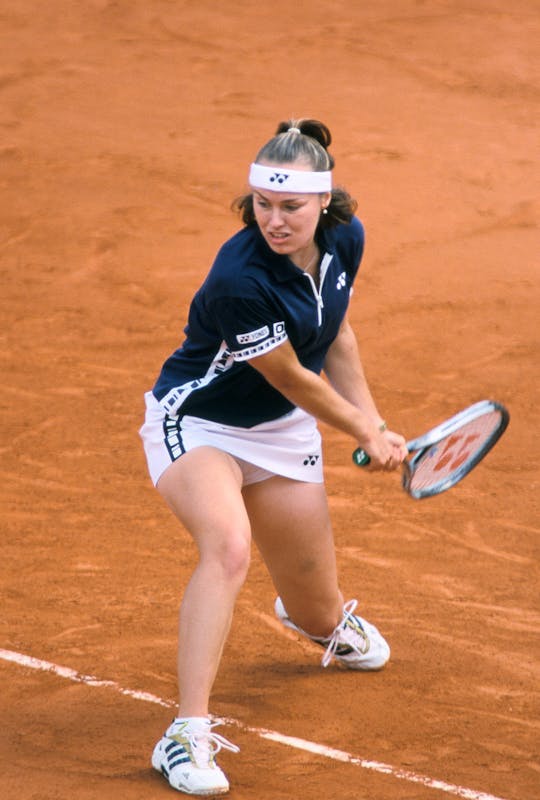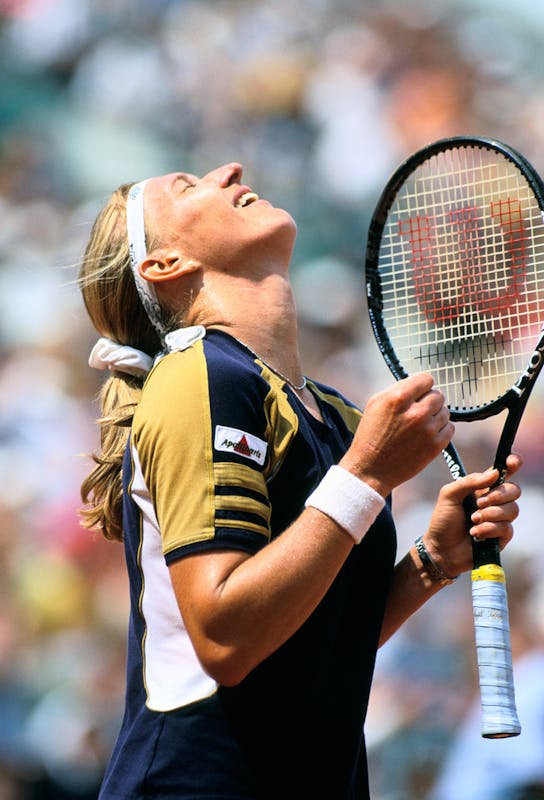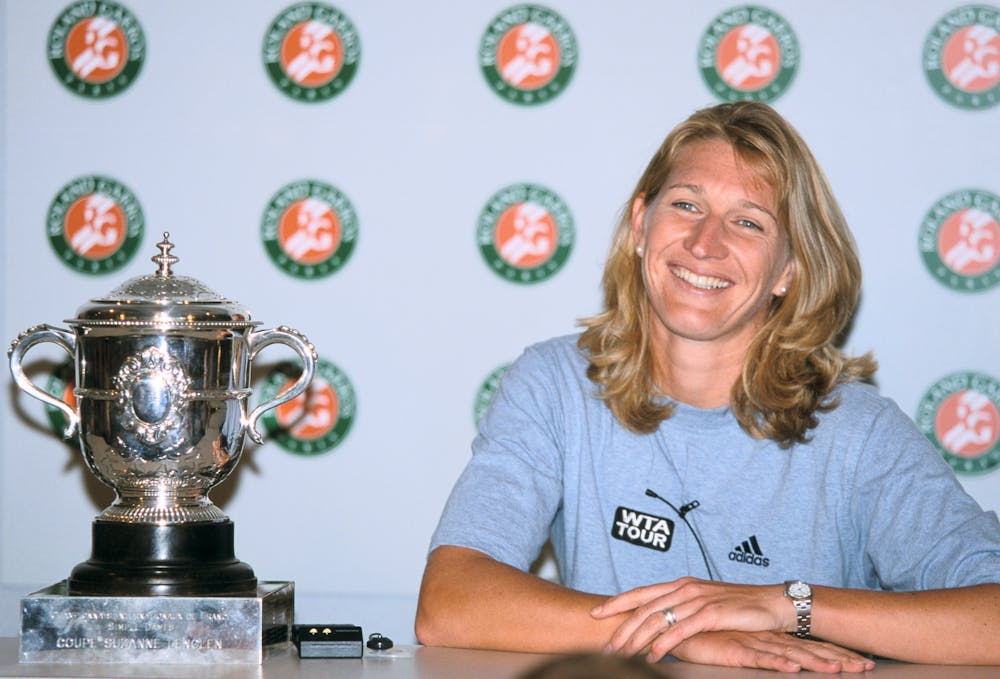Rolandgarros.com invites you to experience the 2020 tournament on the original dates by looking back at some of the most memorable matches from the past, round by round. Today, Sunday 7 June, we go back to the one of the most dramatic women’s finals in Roland-Garros history: Steffi Graf’s win over Martina Hingis in 1999.
One day, one epic match: Graf - Hingis (Final 1999)
Relive the incredible final between Steffi Graf and Martina Hingis at Roland-Garros 1999.

The context
Although Graf was the most successful player of the Open era with 21 Grand Slam singles titles, the 29-year-old German hadn’t won a major in three years. But she had surprised herself with a strong run, beating the third-seeded Lindsay Davenport and the second-seeded Monica Seles to reach the final. A five-timer winner at Roland-Garros, Graf surely fancied her chances against the 18-year-old Hingis, a child prodigy from Switzerland who had knocked her off the No 1 ranking in 1997 but whom she had beaten three times in the majors.
A hugely clever tactician, Hingis had been on a roll during the 1999 season, winning both the singles and doubles titles at the Australian Open. But the Roland-Garros trophy had been the one thing missing from the resume of the Swiss teenager, who was already an Australian Open, Wimbledon and US Open champion by the time she turned 17.

The match
One of the most tempestuous finals in tournament history started off uneventfully, as Hingis won the first set 6-4 with superb tennis, and quickly went up a break in the second. Then, with Graf serving at 2-0 down, the wheels started to come off after a dispute over a line call. A forehand return had been called out, much to the dismay of Hingis, who argued her shot had hit the line. The call stood after chair umpire Anne Lasserre went to check the line. Hingis then marched over to Graf’s side of the court to point to the mark, earning her boos from the crowd and eventually a penalty point from the umpire. With the crowd now firmly on the side of the veteran German, Hingis’ game started to unravel. Serving for her first Roland-Garros championship at 5-4, the Swiss was broken. Another service break followed to hand Graf the second set.

A lenghty bathroom break to change her outfit after the first game of the decider didn’t help much as Graf ran away with the third set. Then another moment of high drama as Hingis stunned Graf with an underarm serve to fend off match point at 5-2 down. Graf raised her eyebrows and shook her head as the crowd whistled and booed. Hingis attempted another underarm serve on Graf’s second match point, only for it to sail long. When Hingis complained about the crowd noise to the umpire, Graf had had enough. “Can we just play tennis, OK” she said. A normal second-serve soon followed, with Graf clinching her sixth win in Paris with a 4-6, 7-5, 6-2 win on a backhand error.
What they said
“This feels amazing; I feel French,” Graf said after the match. “This is by far the biggest, the most unexpected win I've ever had. It was one of the craziest matches ever; it had everything.”
Hingis was so distraught she left the court in tears, and only came back for the trophy presentation after her mother and coach, Melanie Molitor, told her to do so. But she vowed to come back to win the title. "I don't give up until I have this one also,” said Hingis, who had also lost in the 1997 Roland-Garros final.
Match stats
Graf won just 33.3 percent of points on her second serve in the first set but in the third set, it rose to 60 percent as she closed in on the title.

What happened next ?
Having won her first major in Paris in 1987, Graf’s 22nd slam win on the clay of Roland-Garros would be her last. Although she reached the final at Wimbledon a month later, losing to American Lindsay Davenport, the German announced her immediate retirement soon after. Graf left the game she dominated for years with 107 titles, including an Open era record 22 majors. She held the No 1 position for 377 weeks in total, including a record 186 straight weeks. In 1988, Graf became the only player in history to complete the so-called Golden Slam, winning all four Grand Slam titles in one year plus Olympic gold.
After her meltdown in Paris, Hingis suffered a 6-2, 6-0 first-round defeat at Wimbledon at the hands of another teen prodigy, Australian Jelena Dokic. Although she would reach four more Grand Slam finals, Hingis would never win another major singles title. She retired from tennis for the first time in 2003 at the age of 22 because of injuries, and for a second time in 2007 after a comeback that lasted two years. A third comeback followed in 2013, this time to play doubles. Hingis was hugely successful, and retired for good in 2017, having achieved the No 1 doubles ranking and winning four Grand Slam women’s doubles championships. Overall, the player named after 18-time major singles champion Martina Navratilova ended her career with 43 titles, including five Grand Slam singles championships and 13 major women’s doubles titles.
 ROLAND-GARROS
18 May - 7 June 2026
ROLAND-GARROS
18 May - 7 June 2026

